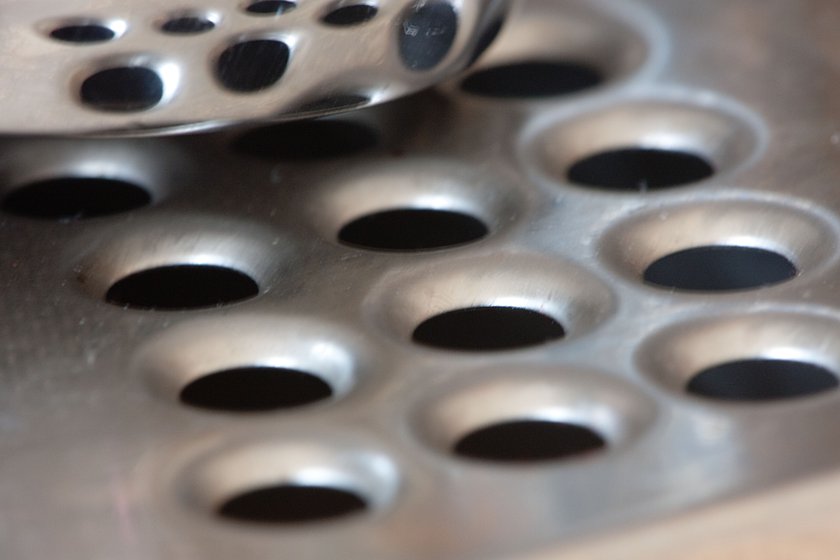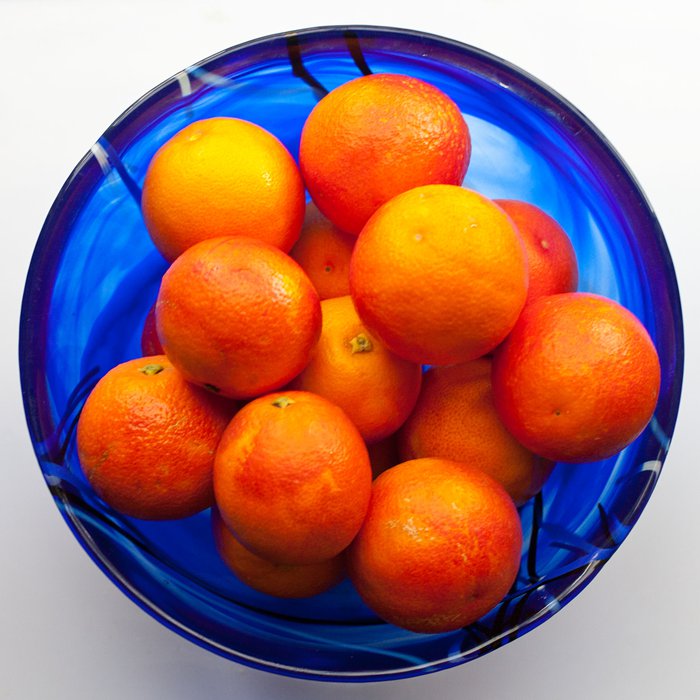Linkage
Beware the Ides of February.
-
Holes and their reflections (\(\mathbb{M}\)). (The reflections are in the curved surface of an espresso portafilter.)

-
The 2019 Bridges mathematical art gallery is online! (\(\mathbb{M}\)). Brian Hayes lists his favorites as being the warped notepaper of Matt Enlow and the Penrose quilt of Douglas G. Burkholder.
-
Some of my own favorites from this year’s Bridges mathematical art gallery (\(\mathbb{M}\)): Fielding Brown’s 3d Lissajous wood ribbon sculpture, Diana Davis’s periodic pentagonal billiards patterns, Stephen Kenney’s illustration of triangle geometry, Elizabeth Paley’s stoneware Klein bottle, and Anduriel Widmark’s knotted glasswork.
-
Rod Downey, a New Zealand-based theoretical computer scientist who co-founded the theory of parameterized complexity, has won the Rutherford Medal, New Zealand’s highest science award (\(\mathbb{M}\)). Somehow I missed this when it came around last October.
-
Hannah Bast’s slides on the European Symposium on Algorithms 2018 Track B experiment (\(\mathbb{M}\)). (two independent program committees decided on the same set of papers and then the conference accepted the union of their acceptances). Some conclusions: the initial scoring is remarkably consistent, and per-paper discussions to reconcile differences of scoring are useful, but the final decision on which “gray zone” papers to keep is random and could be replaced by a simple threshold.
-
Quanta writes up recent progress on the Erdős–Szemerédi sum-product problem, that any set of numbers must either have many distinct pairwise sums or many distinct products (\(\mathbb{M}\)). Progress: “many” increased from \(\Omega(n^{4/3+1/1509})\) to \(\Omega(n^{4/3+5/5277})\).
-
How to handle journal referees who ask authors to add unjustified citations to their own papers? (\(\mathbb{M}\)). Is their misbehavior protected by the anonymity of peer review or can they be publicly named and shamed?
-
The Cal Poly ag students have started selling these blood oranges at the local farmer’s market, as they do every year around this time, only $1 for five. In the summer they sell sweet corn on the cob. (\(\mathbb{M}\)).

-
Turing patterns in shark skin (\(\mathbb{M}\), original paper). Researchers at the University of Florida led by Gareth Fraser and his student Rory Cooper used reaction-diffusion patterns (also named Turing patterns after Turing’s early work) to model the distribution of scales on sharks, and performed knockdown experiments to validate their model in vivo.
-
Did you know that two different graphs with 81 vertices and 20 edges/vertex are famous enough to have Wikipedia articles? (\(\mathbb{M}\)). The strongly regular Brouwer–Haemers graph connects elements of GF(81) that differ by a fourth power. The Sudoku graph connects cells of a Sudoku grid that should be unequal. Sudoku puzzles are instances of precoloring extension on this graph. Unfortunately the natural graphs on the 81 cards of Set have degree ≠ 20…
-
Josh “cortex” Millard describes how he made a stained glass Menger sponge (\(\mathbb{M}\)).
-
Jacob Siehler labels cubic graphs with binary strings of length 5 so that all labels appear once and each vertex is the xor of its neighbors (\(\mathbb{M}\)). He can do three vertex-transitive 32-vertex graphs: the Dyck graph, an expansion of the vertices of \(K_{4,4}\) into four cycles, and another one I don’t know.
-
Four of Conway’s five $1000-prize problems remain unsolved (\(\mathbb{M}\)): the dead fly problem on spacing of point sets that touch all large convex sets, existence of a 99-vertex graph with each edge in a unique triangle and each non-edge the diagonal of a unique quadrilateral, the thrackle conjecture, on graphs drawn so all edges cross once, and who wins Sylver coinage after move 16?
-
The list of accepted papers from this year’s Symposium on Computational Geometry just came out (\(\mathbb{M}\)).